ZOTAC RTX 2080 Ti Twin Fan Compute Related Benchmarks
We are going to run the Zotac GeForce RTX 2080 Ti Twin Fan through our current set of benchmarks. Compared to when we ran the Founders Edition through the test suite several months ago, we have added several new tests to the evolving compute suite. If you are looking for gaming benchmarks, there are plenty of other sites online for those. We are simply looking at the compute performance here.
Geekbench 4
Geekbench 4 measures the compute performance of your GPU using image processing to computer vision to number crunching.
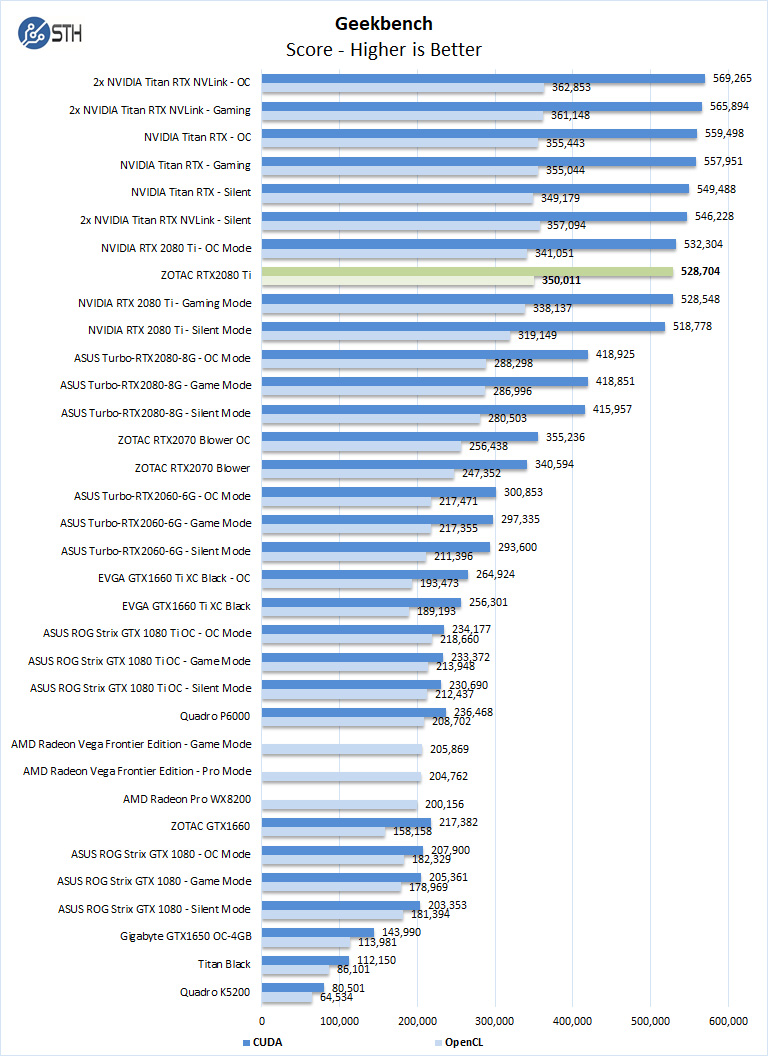
Our first compute benchmark we see the ZOTAC RTX 2080 Ti Twin shows similar to NVIDIA RTX 2080 Ti Founders Edition results.
LuxMark
LuxMark is an OpenCL benchmark tool based on LuxRender.
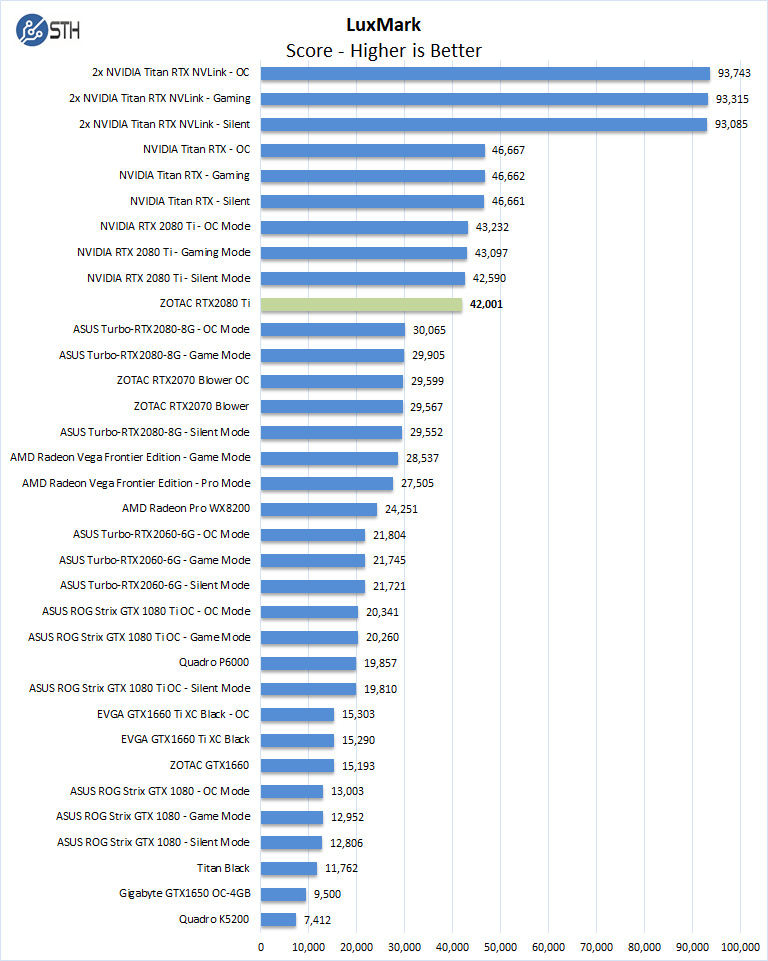
Here we again see performance above that of the NVIDIA GeForce RTX 2080 at the lower end of the NVIDIA GeForce RTX 2080 Ti Founders Edition results. This is where the low-end of the GeForce RTX 2080 Ti segment starts getting closer to the high-end RTX 2080 segment.
AIDA64 GPGPU
These benchmarks are designed to measure GPGPU computing performance via different OpenCL workloads.
- Single-Precision FLOPS: Measures the classic MAD (Multiply-Addition) performance of the GPU, otherwise known as FLOPS (Floating-Point Operations Per Second), with single-precision (32-bit, “float”) floating-point data.
- Double-Precision FLOPS: Measures the classic MAD (Multiply-Addition) performance of the GPU, otherwise known as FLOPS (Floating-Point Operations Per Second), with double-precision (64-bit, “double”) floating-point data.
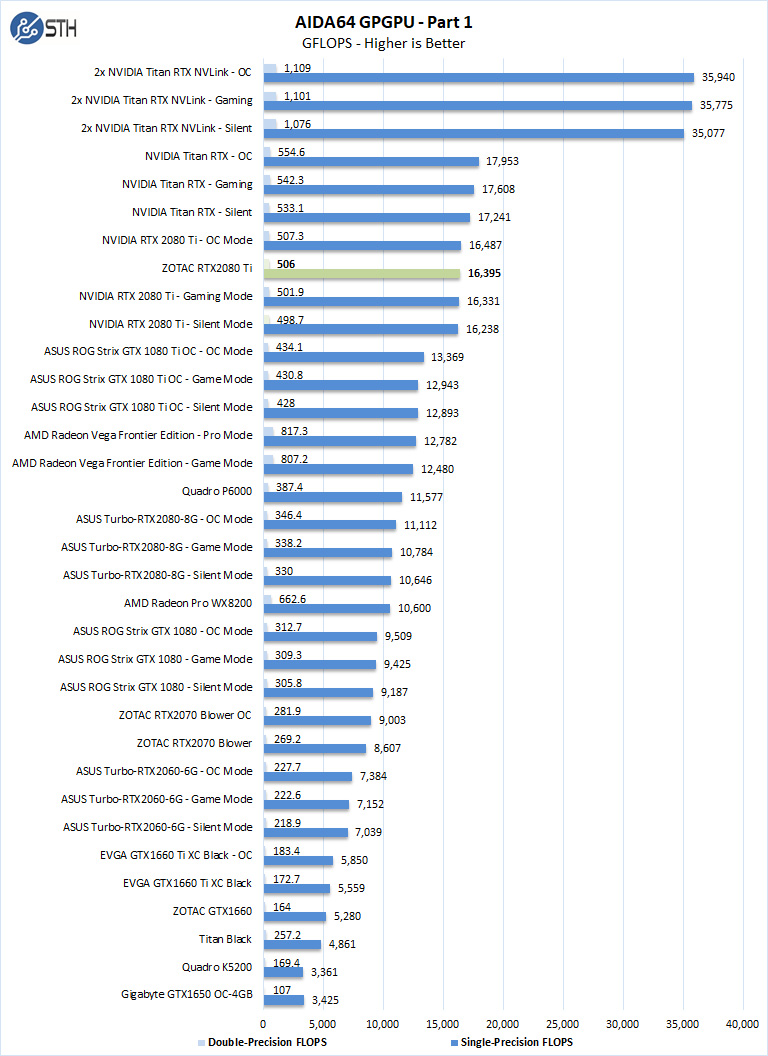
Here we can see results in-line with the Founders Edition card.
The next set of benchmarks from AIDA64 are:
- 24-bit Integer IOPS: Measures the classic MAD (Multiply-Addition) performance of the GPU, otherwise known as IOPS (Integer Operations Per Second), with 24-bit integer (“int24”) data. This particular data type defined in OpenCL on the basis that many GPUs are capable of executing int24 operations via their floating-point units.
- 32-bit Integer IOPS: Measures the classic MAD (Multiply-Addition) performance of the GPU, otherwise known as IOPS (Integer Operations Per Second), with 32-bit integer (“int”) data.
- 64-bit Integer IOPS: Measures the classic MAD (Multiply-Addition) performance of the GPU, otherwise known as IOPS (Integer Operations Per Second), with 64-bit integer (“long”) data. Most GPUs do not have dedicated execution resources for 64-bit integer operations, so instead, they emulate the 64-bit integer operations via existing 32-bit integer execution units.
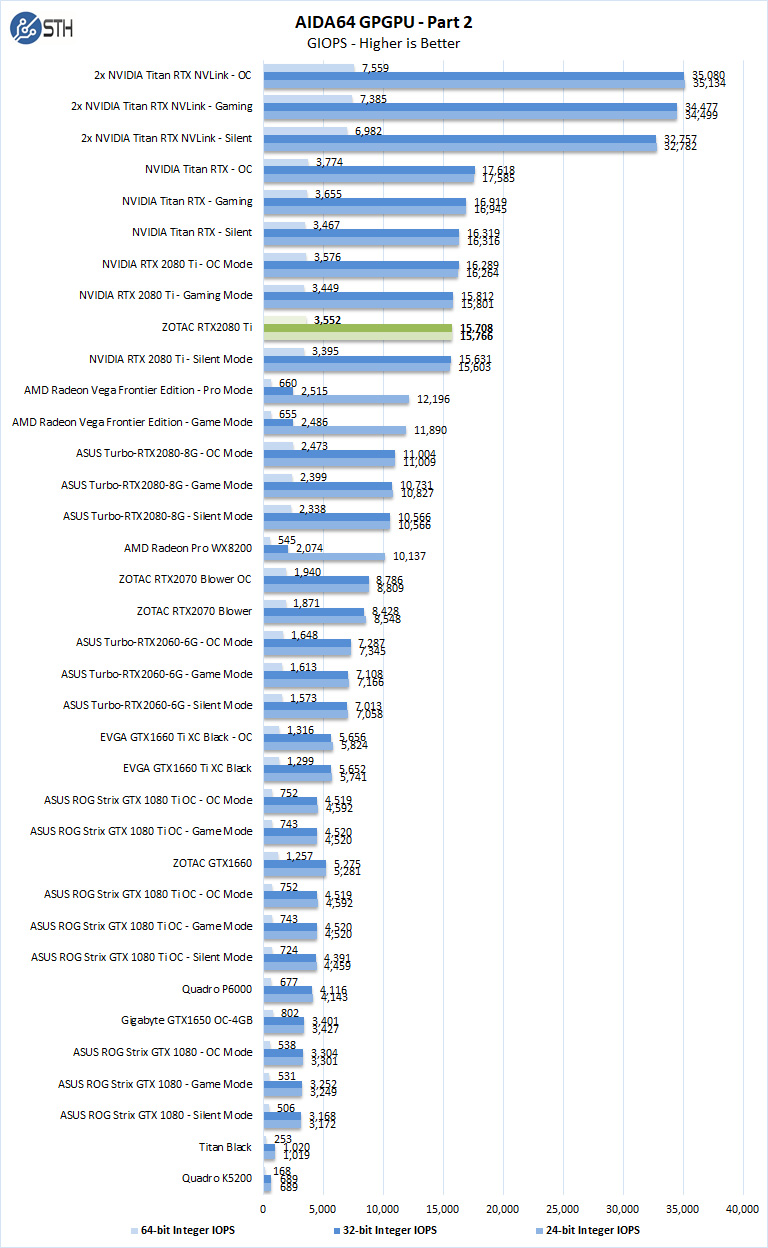
The key trend thus far in these tests is that the ZOTAC GeForce RTX 2080 Ti Twin Fan performs at rates just below the NVIDIA GeForce RTX 2080 Ti Founders Edition.
hashcat64
hashcat64 is a password cracking benchmarks that can run an impressive number of different algorithms. We used the windows version and a simple command of hashcat64 -b. Out of these results we used five results to the graph. Users who are interested in hashcat can learn more here.
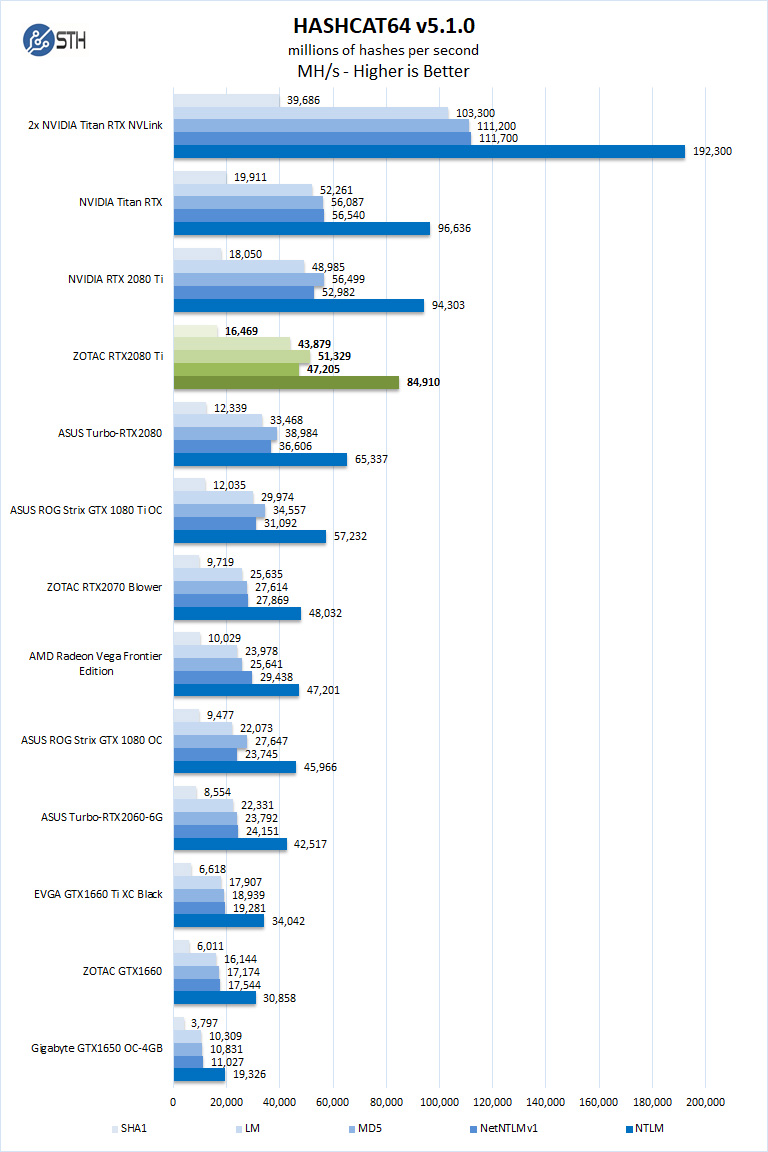
Hashcat64 is a demanding benchmark which heats up GPUs. Indeed, we have seen otherwise stable systems, even some 8x and 10x GTX 1080 Ti systems fail during this testing. Here we see the ZOTAC GeForce RTX 2080 Ti Twin Fan fall just short of the Founders Edition card. Performance is still well beyond the GeForce RTX 2080, but there is a noted impact to the Founders Edition cooling solution.
SPECviewperf 13
SPECviewperf 13 measures the 3D graphics performance of systems running under the OpenGL and Direct X application programming interfaces.
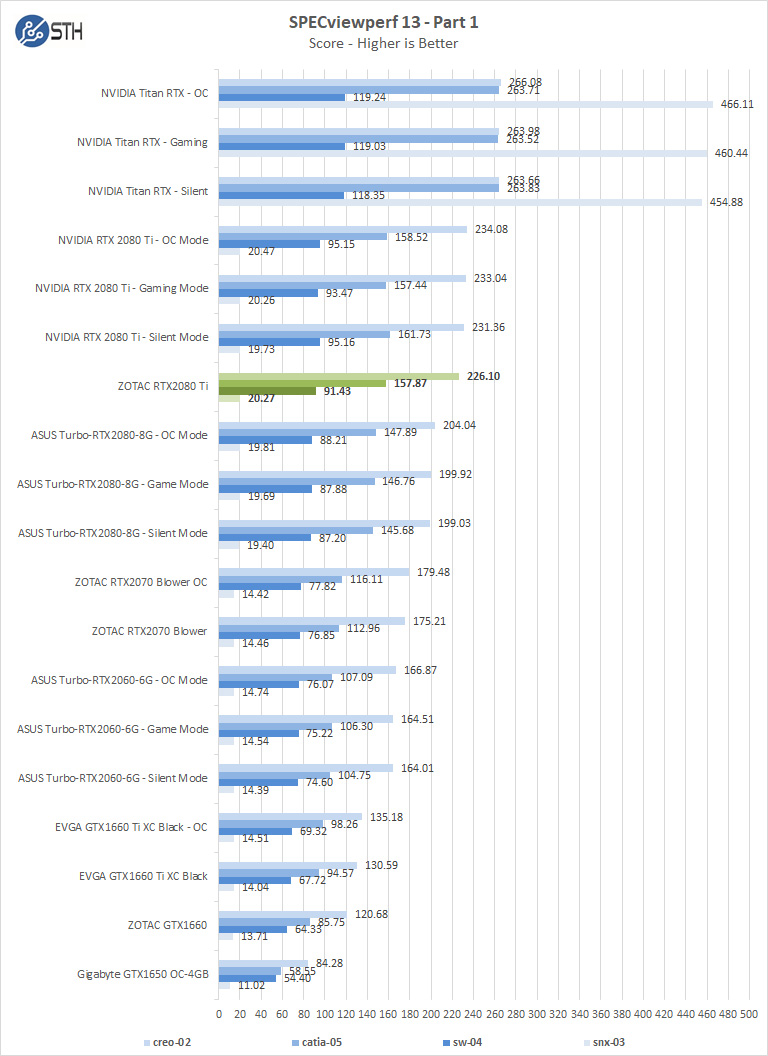
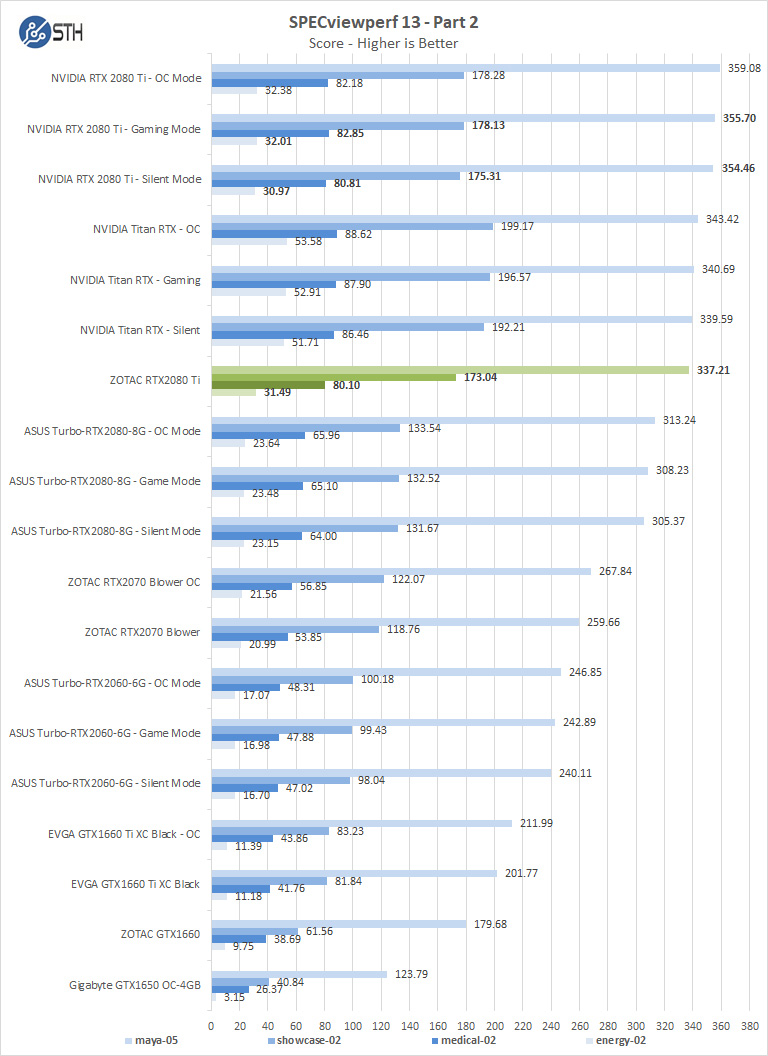
Again we see the ZOTAC GeForce RTX 2080 Ti fall were we would expect to see it, well above the GeForce RTX 2080 and just below the GeForce RTX 2080 Ti Founders Edition.
SPECworkstation 3
SPECworkstation3 measures the 3D graphics performance of systems running under the OpenGL and Direct X application programming interfaces.
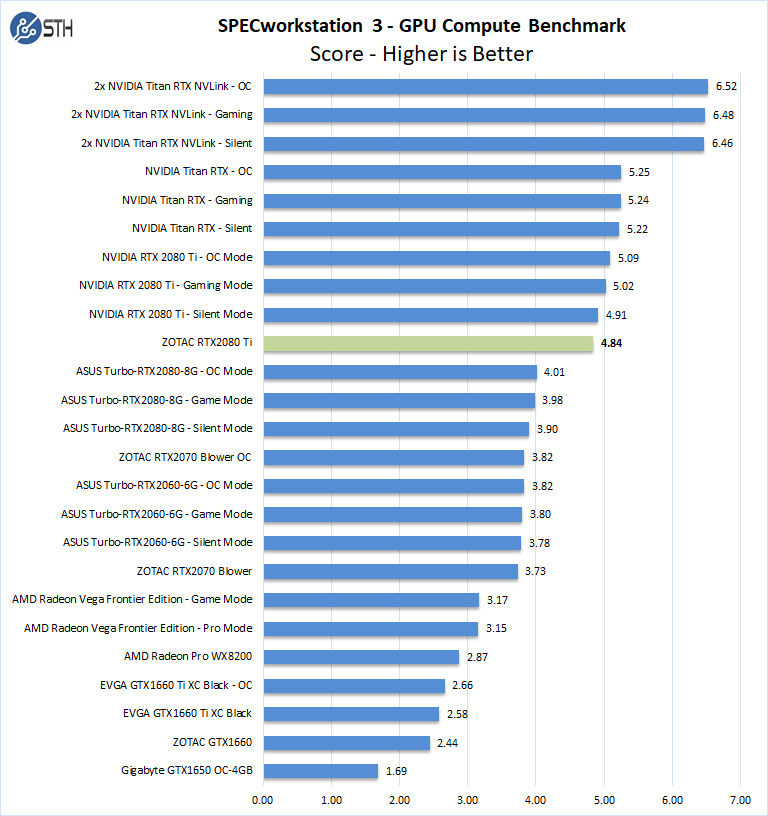
Overall, cooling is having an impact on the card in these compute-related benchmarks.
Let us move on and start our new tests with rendering-related benchmarks.
ZOTAC GeForce RTX 2080 Ti Twin Fan Rendering Related Benchmarks
Next, we wanted to get a sense of the rendering performance of the Zotac GeForce RTX 2080 Ti Twin Fan. Creative professionals often use GPUs for rendering offload, and one may be looking at the Zotac GeForce RTX 2080 Ti as a potential way to get more performance than the GeForce RTX 2080 at not much more incremental cost.
Arion v2.5
Arion Benchmark is a standalone render benchmark based on the commercially available Arion render software from RandomControl. The benchmark is GPU-accelerated using NVIDIA CUDA. However, it’s unique in that it can run on both NVIDIA GPUs and CPUs.
Download the Arion Benchmark from here. First-time users will have to register to download the benchmark.
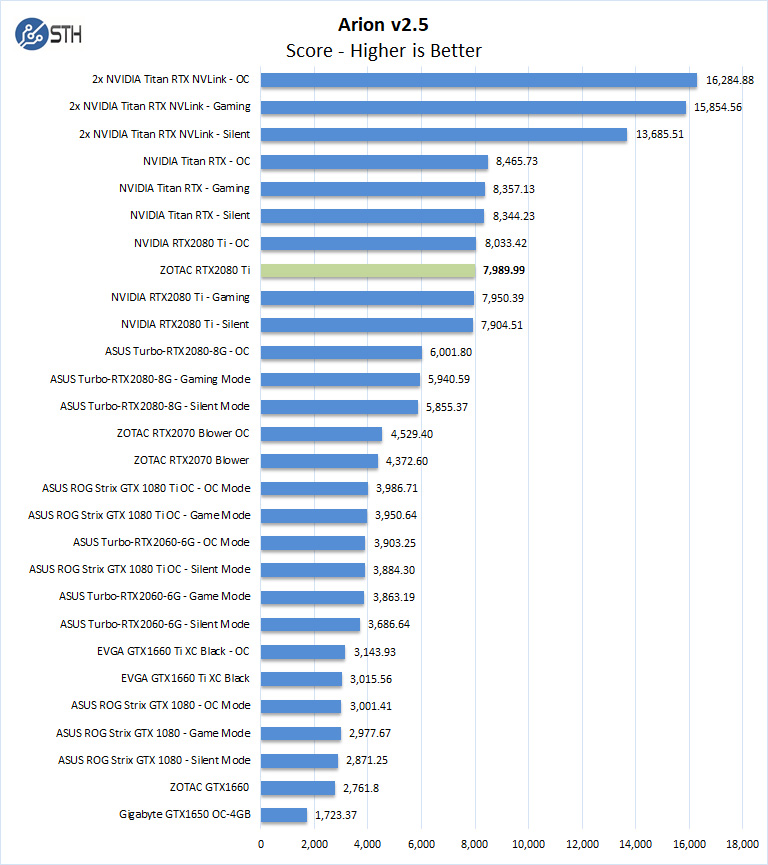
In this particular test, we see the Zotac GeForce RTX 2080 Ti Twin Fan perform just a bit better than the stock RTX 2080 Ti Founders Edition. Remember, we saved over $200 when buying the Zotac card over the NVIDIA branded card so this is a good result.
MAXON Cinema4D 3D
ProRender is an OpenCL based GPU renderer which is available in MAXON’s Cinema4D 3D animation software. A fully functional 42-day trial version is available for downloaded from the MAXON website here. Note: Even after expiration, the trial can still be used to measure render times.
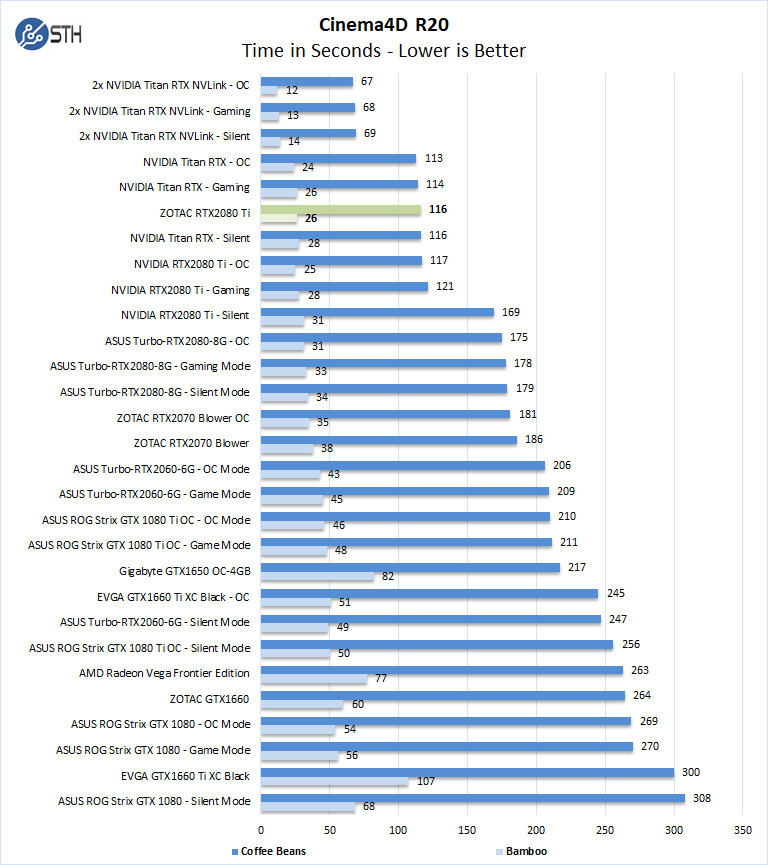
Here the performance again slightly bested the NVIDIA GeForce RTX 2080 Ti Founders Edition which is impressive given the Zotac Geforce RTX 2080 Ti Twin Fans segmentation.
OctaneRender 4
OctaneRender from Otoy is an unbiased GPU renderer using the CUDA API. The latest release, OctaneRender 4, introduces support for out of core geometry. Octane is available as a standalone rendering application, and a demo version is available for downloaded from the OTOY website here.
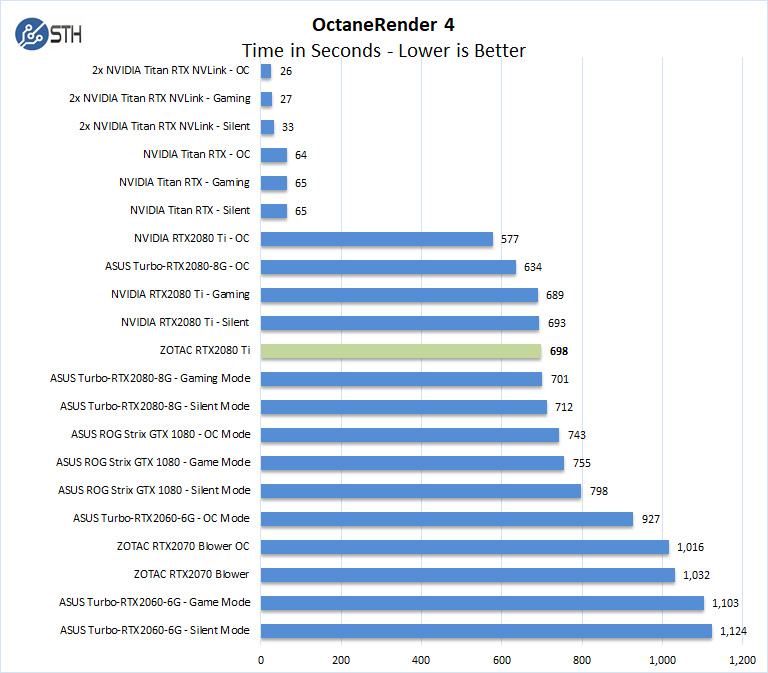
Some of the lower-end cards cannot complete this test. Here we see solid results but this dime performance below the Founders Edition cards.
Redshift v2.6.32
Redshift is GPU-accelerated renderer with production-quality. A Demo version of this benchmark can be found here.
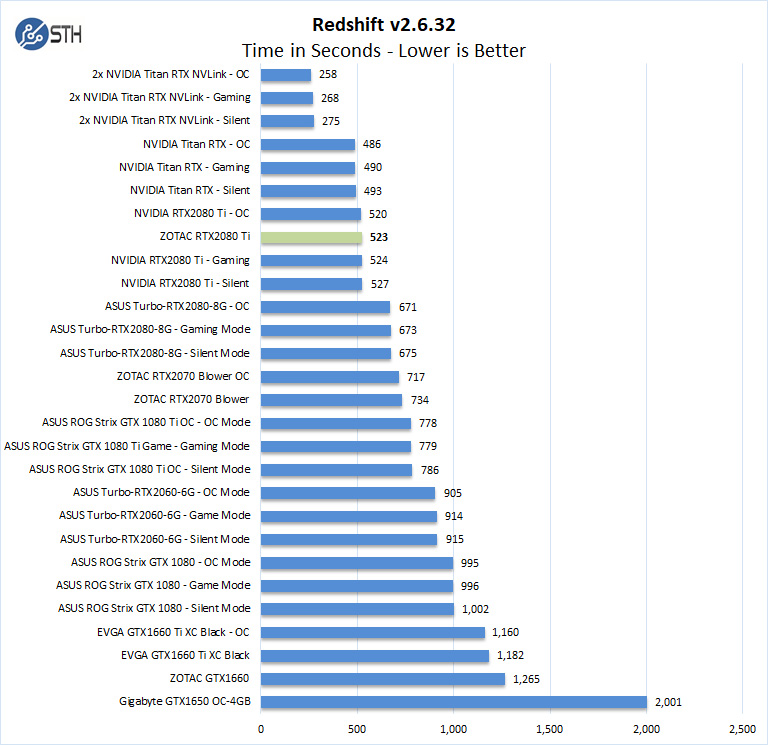
This is another case where the Zotac GeForce RTX 2080 Ti Twin fan slightly out-performed the stock Founders Edition card.
In the compute space, the Founders Edition generally performed better, but in rendering, we saw the Zotac GeForce RTX 2080 Ti Twin Fan perform slightly better.
Next, we will have 3DMark results before moving onto power consumption, thermals, and our final thoughts.



